Potřebujeme váš souhlas k využití jednotlivých dat, aby se vám mimo jiné mohly ukazovat informace týkající se vašich zájmů. Souhlas udělíte kliknutím na tlačítko „OK“.
ASTM E571-12
Standard Practice for Electromagnetic (Eddy-Current) Examination of Nickel and Nickel Alloy Tubular Products
Automaticky přeložený název:
Standardní praktiky pro elektromagnetické (vířivé) prověření niklu a slitiny niklu trubkové výrobky
NORMA vydána dne 1.8.2012
Informace o normě:
Označení normy: ASTM E571-12
Poznámka: NEPLATNÁ
Datum vydání normy: 1.8.2012
Kód zboží: NS-47242
Počet stran: 5
Přibližná hmotnost: 15 g (0.03 liber)
Země: Americká technická norma
Kategorie: Technické normy ASTM
Kategorie - podobné normy:
Anotace textu normy ASTM E571-12 :
Keywords:
discontinuities, eddy-current, electrical resistivity, electromagnetic, encircling coil, magnetic saturation, nickel, nickel alloy, pipe (see ), probe, probe coil, tubes, tubular products, welded tubing, ICS Number Code 77.040.20 (Non-destructive testing of metals), 77.150.40 (Nickel and chromium products)
Doplňující informace
| Significance and Use | ||||||||
|
Eddy-current testing is a nondestructive method of locating discontinuities in metallic materials. Signals can be produced by discontinuities originating on either the external or internal surfaces of the tube or by discontinuities totally contained within the wall. Since the density of eddy currents decreases nearly exponentially with increasing distance from the surface nearest the coil, the response to deep-seated defects decreases correspondingly. Phase changes are also associated with changes in depth, allowing the use of phase analysis techniques. The response from natural discontinuities can be significantly different than that from artificial discontinuities, such as drilled holes or notches. For this reason, sufficient work should be done to establish the sensitivity level and setup required to detect natural discontinuities of consequence to the end use of the product. Some indications obtained by this method may not be relevant to product quality; for example, an irrelevant indication may be caused by minute dents or tool chatter marks, which are not detrimental to the end use of the product. Irrelevant indications can mask unacceptable discontinuities. Relevant indications are those which result from discontinuities. Any indication that exceeds the rejection level shall be treated as a relevant indication until it can be demonstrated that it is irrelevant. Generally, eddy-current examination systems are not sensitive to discontinuities adjacent to the ends of the tube (end effect). Discontinuities such as scratches or seams that are continuous and uniform over the full length of the tube may not always be detected with differential encircling coils or probes scanned along the tube length. For material that is magnetic, a strong magnetic field shall be placed in the region of the examining coil. A magnetic field may also be used to improve the signal-to-noise ratio in tubing that exhibits slight residual magnetism. |
||||||||
| 1. Scope | ||||||||
|
1.1 This practice covers the procedures for eddy-current examination of nickel and nickel alloy tubes. These procedures are applicable for tubes with outside diameters up to 2 in. (50.8 mm), incl, and wall thicknesses from 0.035 to 0.120 in. (0.889 to 3.04 mm), incl. These procedures may be used for tubes beyond the size range recommended, by contractual agreement between the purchaser and the producer. 1.2 The procedures described in this practice make use of fixed encircling test coils or probe systems. 1.3 Units—The values stated in inch-pound units are to be regarded as standard. The values given in parentheses are mathematical conversions to SI units that are provided for information only and are not considered standard. Note 1—For convenience, the term “tube” or “tubular product” will hereinafter be used to refer to both pipe and tubing. 1.4 This standard does not purport to address all of the safety concerns, if any, associated with its use. It is the responsibility of the user of this standard to establish appropriate safety and health practices and determine the applicability of regulatory limitations prior to use. |
||||||||
| 2. Referenced Documents | ||||||||
|
Podobné normy:
Historická
1.4.2014
Historická
1.6.2013
Historická
1.1.2010
Historická
1.4.2012
Historická
1.12.2013
Historická
1.1.2010
Doporučujeme:
Aktualizace technických norem
Chcete mít jistotu, že používáte pouze platné technické normy?
Nabízíme Vám řešení, které Vám zajistí měsíční přehled o aktuálnosti norem, které používáte.
Chcete vědět více informací? Podívejte se na tuto stránku.


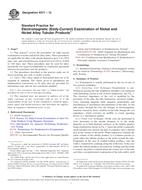
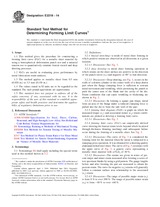 ASTM E2218-14
ASTM E2218-14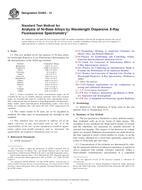 ASTM E2465-13
ASTM E2465-13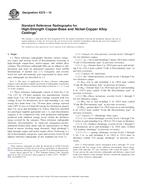 ASTM E272-10
ASTM E272-10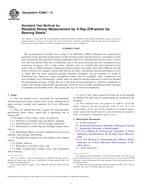 ASTM E2860-12
ASTM E2860-12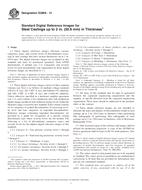 ASTM E2868-13
ASTM E2868-13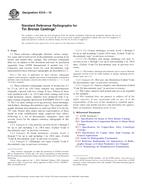 ASTM E310-10
ASTM E310-10
 Cookies
Cookies
